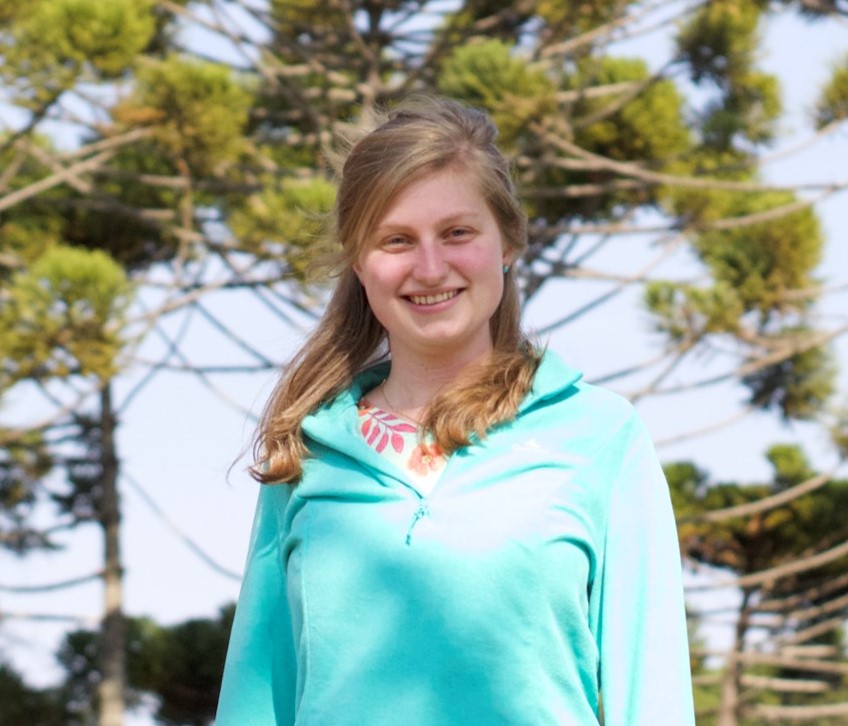What does water mean to you?
Hidden Water: Valuing water we cannot see
Join the discussion
What does water mean to you? Tag @cabotinstitute and #WorldWater #Water2me on Twitter to let us know.
 |
| Adele Hulin |
Why I’m mapping the carbon stored in regrowing Amazonian forests
As we navigate our way out of the global medical pandemic, many are calling for a “green economic recovery”. This green recovery should be at the forefront of many discussions as world leaders, policy makers, scientists and organisations are preparing for the 26th Conference of the Parties (COP26) due to take place in November this year in Glasgow, UK. This conference will once again try to unite the world to help tackle the next and even larger global emergency, the Climate Emergency.
In recent years, the conversations around the Climate Emergency have increased dramatically with many individuals, groups, companies and governments aiming to tackle this emergency, in part, through replanting, restoring and reforesting large areas of land.
But what if we let forests regrow back naturally? How much carbon can they absorb from the atmosphere?
As part of my PhD research at the University of Bristol, I have been looking at naturally regrowing forests in the Brazilian Amazon rainforest. These forests are known as “Secondary forests” and regrow on land that has previously been deforested and used for agricultural or other purposes and has since been abandoned, allowing the natural vegetation to return.
| Figure 1: Secondary Forest in the Tapajos region of the Brazillian Amazon (credit Ricardo Dalagnol) |
Secondary Forests in the Brazilian Amazon are expected to play a key role in achieving the goals of the Paris Agreement. They have a large climate mitigation potential, given their ability to absorb carbon up to 11 times faster than old-growth forests. However, the regrowth of these secondary forests is not uniform across the Amazon and is influenced by regional and local-scale environmental drivers and human disturbances like fires and repeated deforestations.
I worked with numerous scientists from Brazil and the UK to determine the impact of different drivers on the regrowth rates of the secondary forests, using a combination of satellite data. The key datasets we needed were:
- Maps of Secondary Forests area and their ages
- Maps that tell us about the amount of Aboveground Carbon the forest areas contained
- Maps of the spatial patterns of key driving variables like fire extent and rainfall.
What we did
We combined the satellite data maps and overlayed them to extract information on the carbon stored in relation to the forest age to model the regrowth rate with increasing age. We overlayed the information of key environmental drivers and human disturbances to see if and how these factors impact the regrowth rates.
What we found out
Overall, we found that the environmental conditions in Western Amazon enable secondary forests to regrow faster. Here the land received lots of rainfall and does not experience much drought. In the eastern parts of the Amazon, where the climate is drier and experiences more drought, the regrowth rates were up to 60% lower.
In addition to this, we found that the regrowth rates were reduced even further by as much as 80% in eastern regions if the forests were subject to human activities like burning and repeated deforestations before the land was finally abandoned.
What it all means
Our results show the importance of protecting and expanding secondary forest areas to help us meet the Paris Agreement Targets. Our regrowth models can be used to help determine the contribution of current and future regrowing forests in the Brazilian Amazon in a spatial manner.
We found that in 2017, the secondary forests in the Brazilian Amazon stored about 294 Terragrams Carbon aboveground (that excludes carbon stored in roots and soils). However, this number is equivalent to about 0.25% of the carbon that is already stored in Amazon’s old-growth forests. Limiting carbon emissions through deforestation and degradation through burning of old-growth forests is therefore extremely important to help tackle the Climate Emergency.
We calculated that the annual carbon absorbed by the present secondary forest area in the Amazon is enough to contribute to about 5% of Brazil’s pledged contribution to the Paris Agreement by 2030. This number may seem small, but the area covered by the Amazonian secondary forests is currently equivalent to less than 2% of the whole of Brazil. If the area of secondary forest were to be expanded this would bring with it numerous co-benefits such as generating income to landowners and re-establishing ecosystem services.
In December 2020, many countries submitted updates to their so-called Nationally Determined Contributions (NDC), a country’s individual contributions to the Paris Agreement, this included Brazil. However, Brazil’s updated NDC no longer includes a clear position on reforestation, restoration and eliminating illegal deforestation.
At a time when we have all seen and felt the impacts of a true global emergency such as the COVID-19 pandemic, it becomes easier to imagine the potential impacts of climate change if left at the back of politician’s agendas. In the run up to COP26 it is now more important than ever to raise, not lower ambitions as we continue to tackle the global Climate Emergency.
You can read the full paper and download the data here: https://rdcu.be/cg4um.
——————————-
This blog is written by Cabot Institute member Viola Heinrich, School of Geographical Sciences, University of Bristol.
 |
| Viola Heinrich |
Journey to the heart of academic research
| María Paula delighted with her walking stick, lovingly crafted by one of our drivers. |
| The farmers always showed us great hospitality, we even enjoyed hot chocolate made with homegrown cacao beans. Photo: María Paula. |
 |
| Enjoying some downtime in Florencia. Teamwork is at the heart of BioSmart. |
| María Paula conducting an interview with a farmer in Caquetá, Colombia. |
 |
| María Paula Escobar-Tello |







